Sprint - Nextel 2015 Annual Report Download - page 7
Download and view the complete annual report
Please find page 7 of the 2015 Sprint - Nextel annual report below. You can navigate through the pages in the report by either clicking on the pages listed below, or by using the keyword search tool below to find specific information within the annual report.-
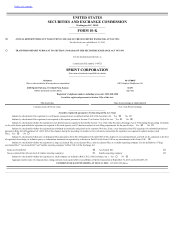 1
1 -
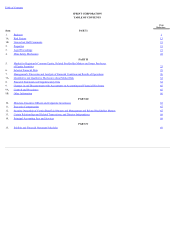 2
2 -
 3
3 -
 4
4 -
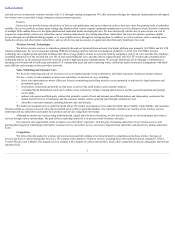 5
5 -
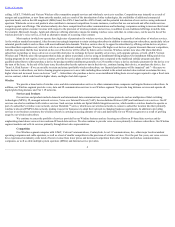 6
6 -
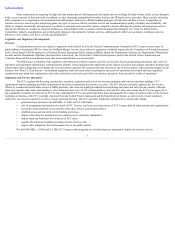 7
7 -
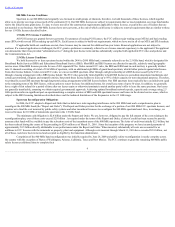 8
8 -
 9
9 -
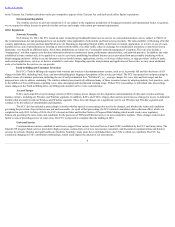 10
10 -
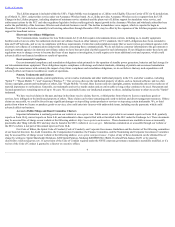 11
11 -
 12
12 -
 13
13 -
 14
14 -
 15
15 -
 16
16 -
 17
17 -
 18
18 -
 19
19 -
 20
20 -
 21
21 -
 22
22 -
 23
23 -
 24
24 -
 25
25 -
 26
26 -
 27
27 -
 28
28 -
 29
29 -
 30
30 -
 31
31 -
 32
32 -
 33
33 -
 34
34 -
 35
35 -
 36
36 -
 37
37 -
 38
38 -
 39
39 -
 40
40 -
 41
41 -
 42
42 -
 43
43 -
 44
44 -
 45
45 -
 46
46 -
 47
47 -
 48
48 -
 49
49 -
 50
50 -
 51
51 -
 52
52 -
 53
53 -
 54
54 -
 55
55 -
 56
56 -
 57
57 -
 58
58 -
 59
59 -
 60
60 -
 61
61 -
 62
62 -
 63
63 -
 64
64 -
 65
65 -
 66
66 -
 67
67 -
 68
68 -
 69
69 -
 70
70 -
 71
71 -
 72
72 -
 73
73 -
 74
74 -
 75
75 -
 76
76 -
 77
77 -
 78
78 -
 79
79 -
 80
80 -
 81
81 -
 82
82 -
 83
83 -
 84
84 -
 85
85 -
 86
86 -
 87
87 -
 88
88 -
 89
89 -
 90
90 -
 91
91 -
 92
92 -
 93
93 -
 94
94 -
 95
95 -
 96
96 -
 97
97 -
 98
98 -
 99
99 -
 100
100 -
 101
101 -
 102
102 -
 103
103 -
 104
104 -
 105
105 -
 106
106 -
 107
107 -
 108
108 -
 109
109 -
 110
110 -
 111
111 -
 112
112 -
 113
113 -
 114
114 -
 115
115 -
 116
116 -
 117
117 -
 118
118 -
 119
119 -
 120
120 -
 121
121 -
 122
122 -
 123
123 -
 124
124 -
 125
125 -
 126
126 -
 127
127 -
 128
128 -
 129
129 -
 130
130 -
 131
131 -
 132
132 -
 133
133 -
 134
134 -
 135
135 -
 136
136 -
 137
137 -
 138
138 -
 139
139 -
 140
140 -
 141
141 -
 142
142 -
 143
143 -
 144
144 -
 145
145 -
 146
146 -
 147
147 -
 148
148 -
 149
149 -
 150
150 -
 151
151 -
 152
152 -
 153
153 -
 154
154 -
 155
155 -
 156
156 -
 157
157 -
 158
158 -
 159
159 -
 160
160 -
 161
161 -
 162
162 -
 163
163 -
 164
164 -
 165
165 -
 166
166 -
 167
167 -
 168
168 -
 169
169 -
 170
170 -
 171
171 -
 172
172 -
 173
173 -
 174
174 -
 175
175 -
 176
176 -
 177
177 -
 178
178 -
 179
179 -
 180
180 -
 181
181 -
 182
182 -
 183
183 -
 184
184 -
 185
185 -
 186
186 -
 187
187 -
 188
188 -
 189
189 -
 190
190 -
 191
191 -
 192
192 -
 193
193 -
 194
194 -
 195
195 -
 196
196 -
 197
197 -
 198
198 -
 199
199 -
 200
200 -
 201
201 -
 202
202 -
 203
203 -
 204
204 -
 205
205 -
 206
206 -
 207
207 -
 208
208 -
 209
209 -
 210
210 -
 211
211 -
 212
212 -
 213
213 -
 214
214 -
 215
215 -
 216
216 -
 217
217 -
 218
218 -
 219
219 -
 220
220 -
 221
221 -
 222
222 -
 223
223 -
 224
224 -
 225
225 -
 226
226 -
 227
227 -
 228
228 -
 229
229 -
 230
230 -
 231
231 -
 232
232 -
 233
233 -
 234
234 -
 235
235 -
 236
236 -
 237
237 -
 238
238 -
 239
239 -
 240
240 -
 241
241 -
 242
242 -
 243
243 -
 244
244 -
 245
245 -
 246
246 -
 247
247 -
 248
248 -
 249
249 -
 250
250 -
 251
251 -
 252
252 -
 253
253 -
 254
254 -
 255
255 -
 256
256 -
 257
257 -
 258
258 -
 259
259 -
 260
260 -
 261
261 -
 262
262 -
 263
263 -
 264
264 -
 265
265 -
 266
266 -
 267
267 -
 268
268 -
 269
269 -
 270
270 -
 271
271 -
 272
272 -
 273
273 -
 274
274 -
 275
275 -
 276
276 -
 277
277 -
 278
278 -
 279
279 -
 280
280 -
 281
281 -
 282
282 -
 283
283 -
 284
284 -
 285
285 -
 286
286 -
 287
287 -
 288
288 -
 289
289 -
 290
290 -
 291
291 -
 292
292 -
 293
293 -
 294
294 -
 295
295 -
 296
296 -
 297
297 -
 298
298 -
 299
299 -
 300
300 -
 301
301 -
 302
302 -
 303
303 -
 304
304 -
 305
305 -
 306
306 -
 307
307 -
 308
308 -
 309
309 -
 310
310 -
 311
311 -
 312
312 -
 313
313 -
 314
314 -
 315
315 -
 316
316 -
 317
317 -
 318
318 -
 319
319 -
 320
320 -
 321
321 -
 322
322 -
 323
323 -
 324
324 -
 325
325 -
 326
326 -
 327
327 -
 328
328 -
 329
329 -
 330
330 -
 331
331 -
 332
332 -
 333
333 -
 334
334 -
 335
335 -
 336
336 -
 337
337 -
 338
338 -
 339
339 -
 340
340 -
 341
341 -
 342
342 -
 343
343 -
 344
344 -
 345
345 -
 346
346 -
 347
347 -
 348
348 -
 349
349 -
 350
350 -
 351
351 -
 352
352 -
 353
353 -
 354
354 -
 355
355 -
 356
356 -
 357
357 -
 358
358 -
 359
359 -
 360
360 -
 361
361 -
 362
362 -
 363
363 -
 364
364 -
 365
365 -
 366
366 -
 367
367 -
 368
368 -
 369
369 -
 370
370 -
 371
371 -
 372
372 -
 373
373 -
 374
374 -
 375
375 -
 376
376 -
 377
377 -
 378
378 -
 379
379 -
 380
380 -
 381
381 -
 382
382 -
 383
383 -
 384
384 -
 385
385 -
 386
386 -
 387
387 -
 388
388 -
 389
389 -
 390
390 -
 391
391 -
 392
392 -
 393
393 -
 394
394 -
 395
395 -
 396
396 -
 397
397 -
 398
398 -
 399
399 -
 400
400 -
 401
401 -
 402
402 -
 403
403 -
 404
404 -
 405
405 -
 406
406
 |
 |

Table of Contents
Some competitors are targeting the high-end data market and are offering deeply discounted rates in exchange for high-volume traffic as they attempt to
utilize excess capacity in their networks. In addition, we face increasing competition from other wireless and IP-based service providers. Many carriers, including
cable companies, are competing in the residential and small business markets by offering bundled packages of both voice and data services. Competition in
wireline services is based on price and pricing plans, the types of services offered, customer service and communications quality, reliability and availability. Our
ability to compete successfully will depend on our ability to anticipate and respond to various competitive factors affecting the industry, including new services
that may be introduced, changes in consumer preferences, demographic trends, economic conditions and pricing strategies. See "Item 1A. Risk Factors—
Competition, industry consolidation, and technological changes in the market for wireless services could negatively affect our operations, resulting in adverse
effects on our revenues, cash flows, growth, and profitability."
Legislative and Regulatory Developments
Overview
Communications services are subject to regulation at the federal level by the Federal Communications Commission (FCC) and in certain states by
public utilities commissions (PUCs). Since the SoftBank Merger, we have been subject to regulatory conditions imposed by the Committee on Foreign Investment
in the United States (CFIUS) pursuant to a National Security Agreement (NSA) among SoftBank, Sprint, the Department of Justice, the Department of Homeland
Security and the Department of Defense (the latter three collectively, the USG Parties). Other federal agencies, such as the Federal Trade Commission and
Consumer Financial Protection Bureau, have also asserted jurisdiction over our business.
The following is a summary of the regulatory environment in which we operate and does not describe all present and proposed federal, state and local
legislation and regulations affecting the communications industry. Some legislation and regulations are the subject of judicial proceedings, legislative hearings and
administrative proceedings that could change the way our industry operates. We cannot predict the outcome of any of these matters or their potential impact on our
business. See "Item 1A. Risk Factors—Government regulation could adversely affect our prospects and results of operations; the federal and state regulatory
commissions may adopt new regulations or take other actions that could adversely affect our business prospects, future growth or results of operations."
Regulation and Wireless Operations
The FCC regulates the licensing, construction, operation, acquisition and sale of our wireless operations and wireless spectrum holdings. FCC
requirements impose operating and other restrictions on our wireless operations that increase our costs. The FCC does not currently regulate rates for services
offered by commercial mobile radio service (CMRS) providers, and states are legally preempted from regulating such rates and entry into any market, although
states may regulate other terms and conditions. The Communications Act of 1934 (Communications Act) and FCC rules also require the FCC's prior approval of
the assignment or transfer of control of an FCC license, although the FCC's rules permit spectrum lease arrangements for a range of wireless radio service licenses,
including our licenses, with FCC oversight. Approval from the Federal Trade Commission and the Department of Justice, as well as state or local regulatory
authorities, also may be required if we sell or acquire spectrum interests. The FCC sets rules, regulations and policies to, among other things:
• grant and renew licenses in the 800 MHz, 1.9 GHz and 2.5 GHz bands;
• rule on assignments and transfers of control of FCC licenses, and leases covering our use of FCC licenses held by other persons and organizations;
• govern the interconnection of our networks with other wireless and wireline carriers;
• establish access and universal service funding provisions;
• impose rules related to unauthorized use of and access to subscriber information;
• impose fines and forfeitures for violations of FCC rules;
• regulate the technical standards governing wireless services; and
• impose other obligations that it determines to be in the public interest.
We hold 800 MHz, 1.9 GHz and 2.5 GHz FCC licenses authorizing the use of radio frequency spectrum to deploy our wireless services.
5
